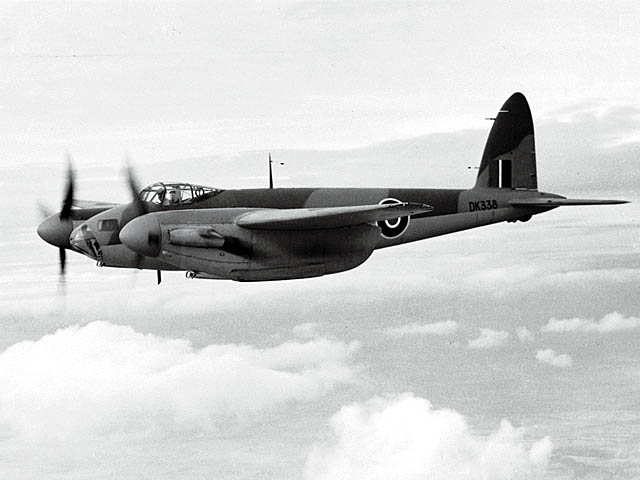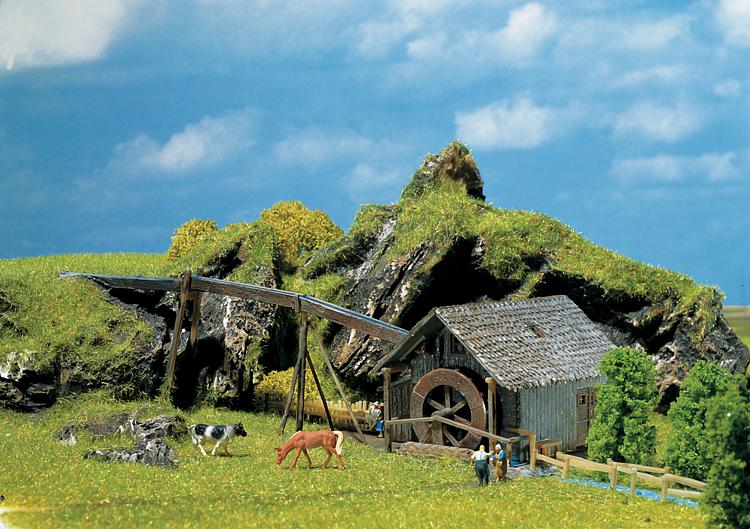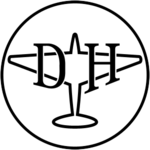Aircraft, Propeller, de Havilland Mosquito
| Name | Aircraft, Propeller, de Havilland Mosquito |
| Region | Europe |
| Category | Aircraft |
| Type | Propeller |
| SubType | de Havilland |
| Variety | Mosquito |
| Manufacturer | De Havilland (Details) |
| Era | EU Epoch II (1920 - 1945) |
| Source of Text | Wikipedia |
| Text Credit URL | Link |
| Year(s) of Production | 1940 - 1950 |
History:
The Bristol Type 156 Beaufighter (often referred to simply as the "Beau") is a multi-role aircraft developed during the Second World War by the Bristol Aeroplane Company in the United Kingdom. It was originally conceived as a heavy fighter variant of the Bristol Beaufort bomber. Upon its entry to service, the Beaufighter proved to be well suited to the night fighter role, for which the Royal Air Force (RAF) initially deployed the type during the height of the Battle of Britain, in part due to its large size allowing it to accommodate both heavy armaments and early airborne interception radar without major performance penalties.
As its wartime service continued, the Beaufighter was used in many different roles; receiving the nicknames Rockbeau for its use as a rocket-armed ground attack aircraft, and Torbeau in its role as a torpedo bomber against Axis shipping, in which it came to replace the Beaufort. In later operations, it served mainly as a maritime strike/ground attack aircraft, RAF Coastal Command having operated the largest number of Beaufighters amongst all other commands at one point. The Royal Australian Air Force (RAAF) also made extensive use of the type in the maritime anti-shipping role, such as during the Battle of the Bismarck Sea.
The Beaufighter saw extensive service during the war with the RAF (59 squadrons), Fleet Air Arm (15 squadrons), RAAF (seven squadrons), Royal Canadian Air Force (four squadrons), United States Army Air Forces (four squadrons), Royal New Zealand Air Force (two squadrons), South African Air Force (two squadrons) and Polskie Siły Powietrzne (Free Polish Air Force; one squadron). In addition, variants of the Beaufighter were also manufactured in Australia by the Department of Aircraft Production (DAP); such aircraft are sometimes referred to by the name DAP Beaufighter.
As its wartime service continued, the Beaufighter was used in many different roles; receiving the nicknames Rockbeau for its use as a rocket-armed ground attack aircraft, and Torbeau in its role as a torpedo bomber against Axis shipping, in which it came to replace the Beaufort. In later operations, it served mainly as a maritime strike/ground attack aircraft, RAF Coastal Command having operated the largest number of Beaufighters amongst all other commands at one point. The Royal Australian Air Force (RAAF) also made extensive use of the type in the maritime anti-shipping role, such as during the Battle of the Bismarck Sea.
The Beaufighter saw extensive service during the war with the RAF (59 squadrons), Fleet Air Arm (15 squadrons), RAAF (seven squadrons), Royal Canadian Air Force (four squadrons), United States Army Air Forces (four squadrons), Royal New Zealand Air Force (two squadrons), South African Air Force (two squadrons) and Polskie Siły Powietrzne (Free Polish Air Force; one squadron). In addition, variants of the Beaufighter were also manufactured in Australia by the Department of Aircraft Production (DAP); such aircraft are sometimes referred to by the name DAP Beaufighter.
Railroad/Company:
The de Havilland Aircraft Company Limited /dəˈhævɪlənd/ was a British aviation manufacturer established in late 1920 by Geoffrey de Havilland at Stag Lane Aerodrome Edgware on the outskirts of north London. Operations were later moved to Hatfield in Hertfordshire.
Known for its innovation, de Havilland was responsible for a number of important aircraft, including the Moth biplane which revolutionised general aviation in the 1920s; the 1930s Fox Moth, the first commercial transport able to operate without government subsidy;[citation needed] the wooden World War II Mosquito multi-role aircraft; and the passenger jet service pioneering Comet.
The de Havilland company became a member of the Hawker Siddeley group in 1960, but lost its separate identity in 1963. Today it is part of BAE Systems plc, the British aerospace and defence business.
The de Havilland company became a member of the Hawker Siddeley group in 1960, but lost its separate identity in 1963. Today it is part of BAE Systems plc, the British aerospace and defence business.
Item Links:
We found: 1 different collections associated with
Aircraft - Propeller - Mosquito
- Collection War at Sea: 1 different items
Item created by: gdm
on 2019-05-13 11:52:25
If you see errors or missing data in this entry, please feel free to log in and edit it. Anyone with a Gmail account can log in instantly.
If you see errors or missing data in this entry, please feel free to log in and edit it. Anyone with a Gmail account can log in instantly.








